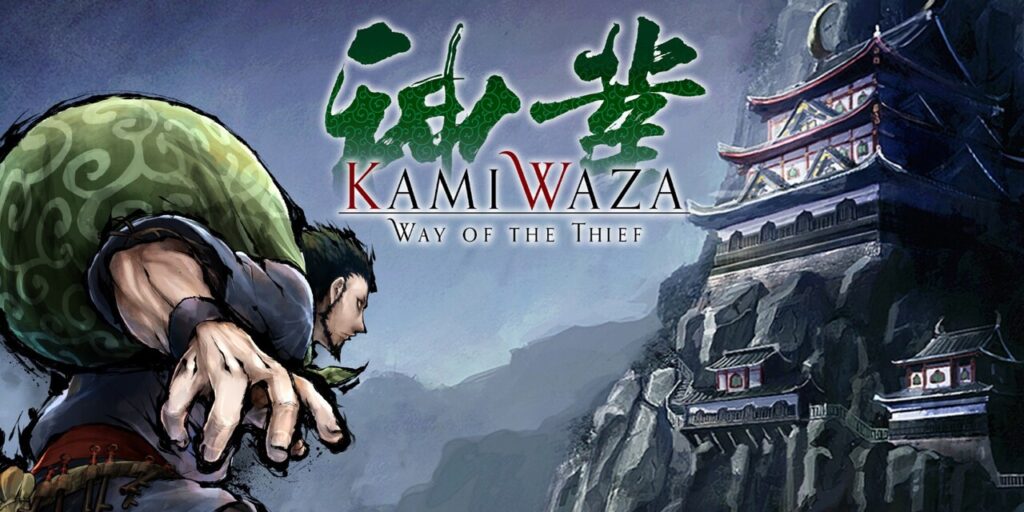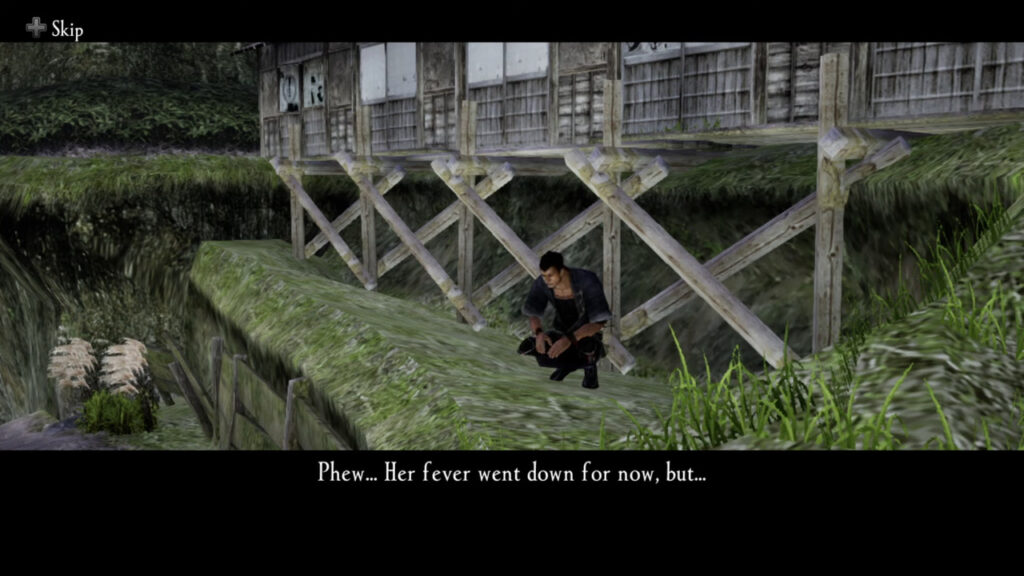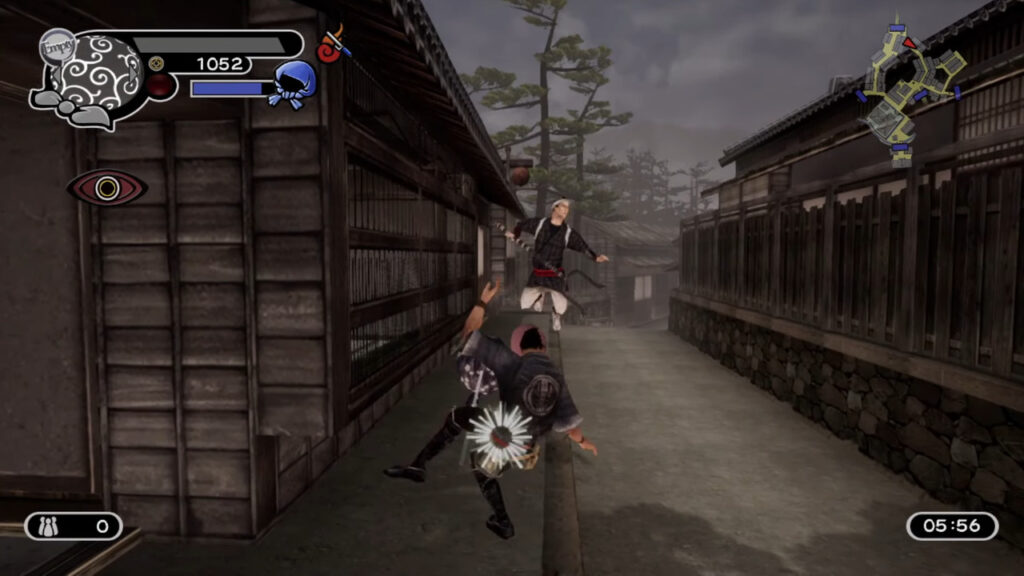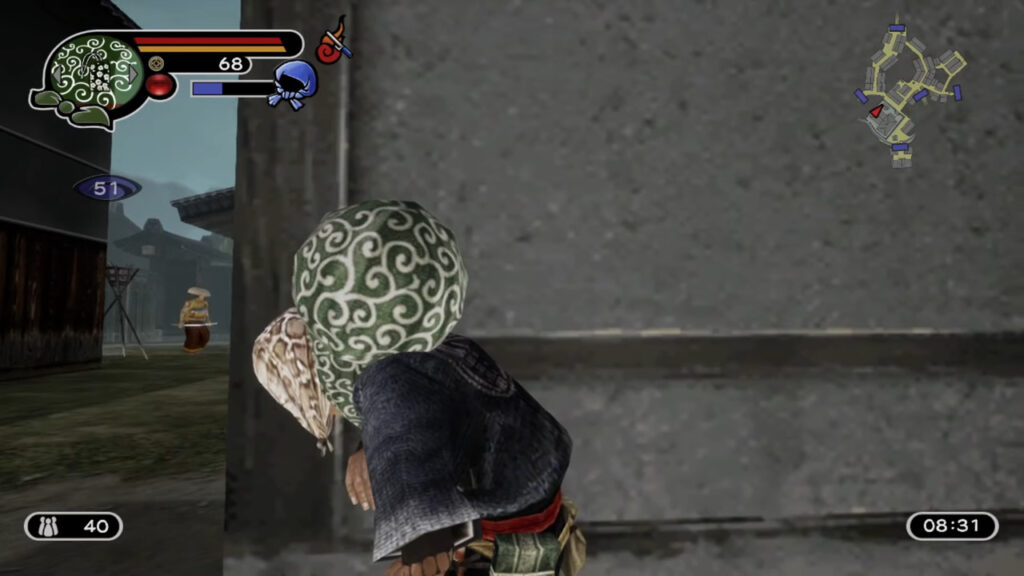
Developer: Acquire
Publisher: NIS
Platform: Switch, PS4
Tested on: PS4
Kamiwaza: Way of the Thief – Review
It’s becoming increasingly common for developers to resurrect decade-plus old niche titles from Japan and officially localize them in the West for the first time. With good reason too, as games like Live a Live or NIS’ Prinny Presents series often still hold up surprisingly well. Kamiwaza: Way of the Thief is another title that aims to woo Western audiences long after it initially debuted in Japan: 15 years ago, on the PS2, to be exact. NIS is now bringing Acquire’s old stealth action game to PS4 and Switch. Is this a hidden gem you should snatch or should it have stayed behind lock and key?
Story
The quickest and easiest way to explain Kamiwaza’s premise is that it’s basically Robin Hood set in Edo-era Japan. Our hero, Ebizo, is a retired thief who turned his back on a life of crime years prior. When his adoptive daughter Suzuna becomes sick, however, he has no choice but to return to his old ways as he isn’t able to afford her treatment by honest means. This means stealing from the rich, but in order to stay out of the hands of law enforcement, Ebizo needs to make sure that the poor townsfolk are on his side, so he ultimately has to donate some of this loot to the needy as well. It’s a rather simple premise that is infused with surrealist humor and over-the-top action, and we found it surprisingly entertaining, even if some of the jokes didn’t always land.
Graphics
You’d expect a port of a 15-year-old PS2 title to perform somewhat decently on a modern device, even one that isn’t a graphical powerhouse like the Switch. Unfortunately, that isn’t the case with Kamiwaza. The frame rate has a hard time keeping up with on-screen action and stuttering is fairly common. Given that the visuals haven’t received a complete overhaul but still look suspiciously close to PS2 visuals makes the poor performance even more baffling. Character animations are janky and awkward, though it appeared that this was deliberate and tied into a misguided attempt at slapstick humor. To make matters worse, the camera is very poorly implemented as well, often making it feel like the game is fighting against you every step of the way. The aesthetics and art direction are fine but something could have been done to make Kamiwaza’s visuals flow more smoothly.
Sound
Despite Kamiwaza’s setting in old-timey Japan, the game’s soundtrack feels surprisingly modern, even fifteen years after it originally debuted. Composer Noriyuki Asakura blends modern instruments like electric guitars and drums with more traditional instruments, creating a unique atmosphere that fits the over-the-top style of the game. Combined with above-average voice acting, an ambient soundscape that changes depending on how the crowd views your reputation, and great sound effects, Kamiwaza definitely nails what it has to offer in terms of audio.
Gameplay
It wouldn’t be entirely fair to judge Kamiwaza’s gameplay by current-day standards, so we’ll try to look at the game with the correct mindset. The game is definitely a product of its time, even if it was considered ambitious back in 2006. It’s essentially a stealth action game where your goal is to steal valuables. Well, we say stealth, but the game actually challenges players to perform their acts of theft in the most flamboyant ways possible in order to obtain improve Ebizo’s abilities. Stealing items from under an enemy’s nose will net you more style points than simply sneaking in behind their back and swiping your target unnoticed. The obtained style points can be spent on new skills, meaning Ebizo gains new tricks to perform even more over-the-top acts of derring-do. Additionally, spectacular acts can be chained into combos which then allow you to make getaways from enemies that target you. Any items you obtain by nefarious means are stored in Ebizo’s trusty burglar sack, which physically grows bigger as you obtain more loot. The sack can grow to comically large sizes during certain missions, and it can even be used as a weapon. Ebizo can kick his sack like a soccer ball to knock out enemies, for example. Of course, no matter how violent his enemies get, Ebizo will never kill his assailants. He is a gentleman thief after all.
Kamiwaza is set in a quasi-open world that evolves in response to your actions. When you start out, nobody knows who Ebizo is, but as you perform more flamboyant acts of thievery, or if you simply screw up, the alert level in the village starts to go up. This means that over time, it becomes more difficult to go unnoticed and even townsfolk start to act more hostile towards you or call for law enforcement when they see you wandering the streets. Unlike in games like GTA or Skyrim, the alert level is a persistent effect, so you’ll need to make use of disguises to keep a low profile. Alternatively, you can donate part of your loot to the People’s Box to improve your reputation. Your main objective is of course to provide Suzuna with her medicine until she completely recovers from her sickness, but this does not come cheap, so it’s necessary to grind out quite a few missions every day. A high alert level makes this more difficult, as missions are often tied to a strict time limit, and having to avoid law enforcement eats into how long it takes to achieve your objectives. In this way, time is probably your biggest enemy in Kamiwaza.
We already said that Kamiwaza feels like a product of its time and nowhere is this made more clear than when you attempt to navigate the interface, which feels primitive and counterintuitive. It’s often not very clear what to do or where to go next either, because the game lacks structure and you’re often juggling various objectives at once. Although we typically enjoy open-world games, here it’s definitely a case of the developer biting off more than they could chew, and the result is that the elaborate set pieces feel out of place instead of deliberate. This is perhaps a rare game where a level-based structure would have been preferable instead of offering so much freedom to the player. Despite our grievances, however, Kamiwaza isn’t a bad game, just an outdated one. There are plenty of great ideas implemented here that still feel ambitious even today. With branching storylines and multiple endings, there is also plenty of motivation to keep playing Kamiwaza even after the credits roll. You just need to be in the right mindset, as this is very much a PS2-era title. Anyone nostalgic for the early 2000s will probably enjoy Kamiwaza‘s faux-retro blend of action, although we do recommend waiting for a significant price drop as the €40/$40 feels more than a little steep.
Conclusion
By modern-day standards, Kamiwaza is difficult to recommend. There are plenty of fantastic ideas here but the game lacks structure and focus, rendering some of the ideas meaningless. Add to this that the interface feels obtuse and inaccessible and the visual presentation is lackluster, and you’ve got a title that isn’t up to today’s expectations. If you can look past that, however, and can see Kamiwaza as a product of its time, then the game’s flaws become easier to swallow. If you look back fondly on the PS2 era, this is a title worth checking out but otherwise, perhaps this is a game you should skip.
Kamiwaza: Way of the Thief - Review,








No Comments